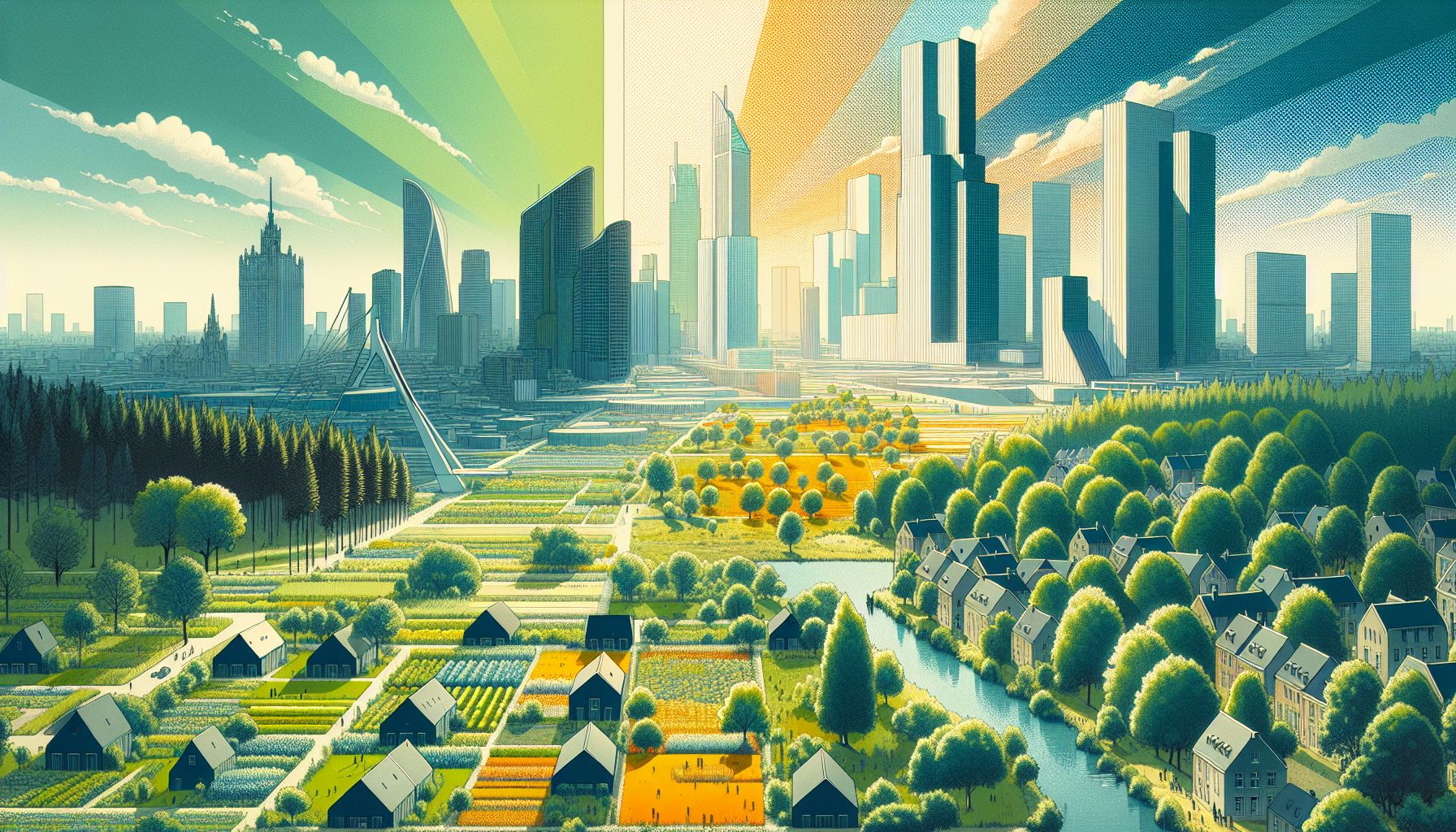Urban Greenery: The Key to Climate-Resilient Cities

Delft, Tuesday, 16 July 2024.
Delft University of Technology researchers are exploring nature-based solutions to make cities more climate-resilient. Their EcoCampus project and Urban Bocage initiative introduce green spaces and linear forests to mitigate heat stress and enhance biodiversity, paving the way for sustainable urban planning.
The EcoCampus Initiative
At the heart of the efforts by Delft University of Technology (TU Delft) is the EcoCampus initiative. This ambitious project aims to integrate more greenery into the university’s campus, creating a healthy ecosystem that can mitigate the effects of climate change. By transforming the campus into a model of sustainability, researchers hope to demonstrate the benefits of nature-based solutions in urban environments. Nico Tillie, René Hoonhout, and Rosa de Wolf are among the experts leading this initiative, focusing on the interplay between nature and the built environment to design climate-adaptive cities.
Urban Bocage: Rethinking Road Profiles
The Urban Bocage project at TU Delft introduces linear forests along roadways, aiming to rethink traditional road profiles and study their impact on the environment and biodiversity. These linear forests, or bocages, are designed to enhance urban greenery and provide cooling effects through increased vegetation. Researchers are experimenting with various plant species from Bordeaux to assess their impact on local biodiversity and soil quality. The project also involves collaboration with Naturalis and the University of Leiden to explore both wet and dry versions of the bocage concept.
Harnessing the Power of Digital Twins
In a parallel effort, TU Delft is part of the Horizon Europe project, UrbanAIR, which aims to develop a digital twin to support climate-adaptive urban planning. This digital twin will simulate different scenarios, providing insights into factors such as wind patterns around high-rise buildings and heat stress in specific urban locations. Led by Femke Vossepoel, the project incorporates models of the global atmosphere down to the street level, coupled with data from sensors measuring temperature, wind, and air pollution. This tool is expected to be a game-changer for urban planners and policymakers, enabling them to design safer, more pleasant, and healthier urban areas.
The Role of Moss and Bioreceptive Concrete
In addition to large-scale greenery projects, TU Delft researchers are exploring smaller-scale solutions such as the use of moss and bioreceptive concrete. Moss has shown potential not only to relieve heat stress through water evaporation and shading but also to act as a powerful air filter. Bioreceptive concrete is designed to support moss growth, offering good insulating properties and reducing freeze-thaw cycles in urban infrastructure. By integrating these innovative materials, cities can enhance their resilience to climate change while improving air quality and insulation.
Global Impact and Future Directions
The efforts at TU Delft are part of a broader movement towards sustainable urban planning. As global mean temperatures continue to rise, the need for climate-adaptive cities becomes ever more urgent. The United Nations projects that by 2050, two in three people will live in urban areas, making the work of institutions like TU Delft crucial for future urban resilience. By pioneering projects like the EcoCampus, Urban Bocage, and UrbanAIR, TU Delft is not only contributing to local sustainability but also setting a global example for other cities to follow. Through continued innovation and collaboration, the path to climate-resilient cities is becoming clearer, paving the way for a sustainable urban future.

